- Products Information
- Comment
EVERYTHING YOU NEED TO KNOW ABOUT CNC MACHINE
Before the advent of computer numerical control (CNC), the production process involved hard human labor; Unnecessarily long production times, wasted materials and full of errors. Today, technology has greatly improved the manufacturing process.
The advent of CNC machining technologies brings high reliability, making repetitive processes more automated. But, what is CNC machining? What products can be made from CNC technology? How does CNC machining work and what materials can be used in the manufacturing process that uses CNC machines?
This article dives into what CNC machining is and the basic concepts involved in the process. We will discuss the advantages of CNC manufacturing; Compared to traditional manufacturing and the contributions of CNC to modern manufacturing.

WHAT IS CNC MACHINE?
The abbreviation CNC stands for Computer Numerical Control. CNC machining is a subtractive manufacturing method, which is the creation of custom shaped designs from workpieces; Through the computer control. By cutting the material in small slices from the original part instead of adding material to create the product.
CNC machining can be described as a manufacturing process performed by robots. This process can help increase productivity because CNC machines can be run automatically without the operator being constantly present.
HISTORY OF CNC MACHINE
CNC's predecessor was numerical control (NC), a process described by the Society of Manufacturing Engineers as "marking the beginning of the second industrial revolution and the advent of an era in which control Control of industrial machinery and processes will no longer be accurate compared to exact science.
CNC machining started as a punched tape-based technology in the 1940s and 1950s before rapidly evolving into analog and digital technology in the 1960s.
John T.Parsons is considered the father of CNC machining. He developed numerical control, this is the principle on which CNC machining is built. But even before Parsons, the machining technique was invented in 1751. Then, in 1952, Richard Kegg, in collaboration with the Massachusetts Institute of Technology (MIT), developed the first CNC milling machine.

BASIC CONCEPTS OF CNC Machining
To understand how CNC works, we need to understand some basic concepts.
Numeric Control
This denotes automatic control of the machine tool. These machine tools range from milling machines to welding machines, grinders, waterjet cutting machines and hydraulic presses.
Desktop CNC Machine (Desktop CNC machine)
These are minimalist versions of CNC and are better adapted to work on softer materials like wax, foam, and plastic. This type of machining uses smaller versions of CNC machines to create smaller products. Mainly serving the field of dentistry, jewelry or teaching.
ORANGE
Is computer-aided machining or manufacturing that uses software to generate the code to run a CNC machine. To work with a CAM system, you need three things:
- The first is the software that instructs the machine in the directions it should move.
- You also need a machine capable of executing instructions.
- Ultimately, you need to be able to do post-processing to turn instructions into a language that machines can understand.
NC Code | G-Code
It is a basic but unique computer language designed for CNC machines; To quickly understand and execute NC code (commonly known as G code). This is the language that programmers use to tell the machine how to produce something.
Post-processor
Is software that converts toolpaths created in a CAM system into NC programs that can be read by the machine controller to move the cutting tool along programmed paths in a safe, consistent and reliable manner. can be predicted.

Types of CNC machines
- Milling Machine (milling)
- Lathe (lathe)
- Grinding Machine (grinding)
- Router machine: commonly used for wood industry
- Plasma cutter (plasma cutter)
- Laser cutter (laser cutter)
- Waterjet cutting machine (water cutter)
- Electric spark machining (EDM): Including pulse shaping machine and wire cutting machine
Famous CNC machine manufacturers in the world
- Japan: Okuma, Moriseiki, Mazak, Shoda, Amada...
- America: Hass, Hurco
- Korea: Dossan
- Germany: DMG Mori
- Taiwan: EXTRON, LEADERWAY, AGMA, TAKANG, ARISTECH
- Switzerland: Mikron Hem
CNC MACHINE TERMS
2D machining: Is machining according to the profile on a plane, the machine does not affect the Z height of the product, only the X and Y axes move at the same time to create straight lines, inclined lines, and arcs. …
2.5D machining: It is the processing of flat and inclined planes, not curved surfaces. This 2.5D classification is not necessarily because the machine cannot move 3 axes at the same time, but just a problem of technology when programming (divided to make it easier to learn without having to learn 3D programming).
3D machining: is the most commonly used processing, used to process molds, work with concave and curved parts. With 3D machining, you can also do 2D and 2.5D . machining
4D machining (4 axes): It is machining with a rotating axis, machining a circular cylinder, and here the 4 axes must move at the same time. And if you add a rotating axis (grading), it is called 3 + 1 machining (non-simultaneous 4-axis machining).
5D machining (5 axes): It is machining with 5 axes moving at the same time, but if you add a mechanism so that the machine can cut in 5-axis mode, it is called 3 + 2 (non-simultaneous 5-axis machining). ). Simultaneous 5-axis machining has 3 main types:
- Head-Head (main shaft tilts and rotates, table is fixed)
- Head-Table (tilt spindle – rotating machine table)
- Table-Table (table both tilt and rotate, main axis fixed)
Mill-Turn CNC (CNC Machining Center): A machine that combines milling and turning on the same machine.
HSM-High Speed Machining: A modern machining method, it is a combination of high spindle speed + small cutting width + feed rate, large depth of cut. The type of milling machine specialized for this method is called a High Speed Counter (HSC) which has spindle speeds S up to 42,000 rpm (or higher) and cutting speeds F up to 40,000 mm/min. ph (or higher).
Operating system (control system): Each type of CNC machine will have its own operating system, operating systems used on CNC machines include: Fanuc, Haidenhain, Siemens, Fagor, Mazatrol ... in which Fanuc operating system most widely used in the world.
VMC (Vertical Machining Center): Vertical machining center – is a machine with a vertical axis (perpendicular) relative to the table.
HMC (Horizontal Machining Center): Horizontal Machining Center – is a machine whose main axis is horizontal (parallel) relative to the table.
CNC programmer: The person who program the CNC machine ; CNC operator: The person who operates the CNC machine . Depending on the operating model of the company, the two positions above can be separated or combined into one. Usually, mass processing and mold processing companies will separate those two positions, In case of single item processing, the programmer is also the machine operator.
GD&T (Geometric Dimensioning & Tolerancing): are all geometrical dimensions and tolerances shown on drawings.
Programming standard - machining standard: Any part placed on a CNC machine must determine the relative position between that part and the cutting tool of the CNC machine, this operation is called "standardization".
Cooling oil - cooling oil: has the effect of cooling, lubricating, cleaning, etc. In the processing process, there are two common types of coolant oil, which are water phase and non-aqueous type.
Fixture: used to determine the position of the workpiece relative to the cutting tool and hold the workpiece in position under the effect of cutting force during machining.
CNC Mill (3 axis, 4 axis, 5 axis): Simultaneous 3-axis milling or 4.5-axis milling.
Workpiece: An unfinished item or an item to be processed. In CNC machining, the workpiece is the workpiece or work piece.
Machine Simulation: Is the actual simulation mode of running CNC machines on?
CNC software (eg Mestercam). In the simulation interface includes a CNC machine with all elements such as jigs, workpieces, tools ... The whole system simulates CNC cutting motion just like reality.

HOW Does CNC Machining Work?
The CNC machine is controlled by a microcomputer. It reads G-codes instructing the machine how to travel, feedrate and spindle speed to use. From G-code the machine also determines the cutting tool for the spindle, cooling mode etc. The cutter that the machine has in the spindle will cut through the material (metal or non-metal) and produce the intended shape. The material that has been removed is called a "chip" chip and it will usually be recycled.
WHAT CAN A CNC MACHINE DO?
CNC machines can produce many different types of products from a variety of materials. Includes metal, plastic, foam and wood. As long as the material can be cut, it can be used to manufacture products on a CNC machine. CNC metal lathes can be used to machine round bars, round pipes, threads. CNC milling machines can be used to machine surfaces, keyways and other irregular shapes. The CNC drill can drill holes.

CNC SOFTWARE
CNC software is application packages that write G-Code that can be read by CNC machines. This software is also known as CAM (Computer-Aided Manufacturing) software. This software is responsible for the numerical control of the CNC machine. It helps to create designs that a computer program on a CNC machine can interpret.
Different types of CNC software have specific uses:
Computer-aided Design (CAD): Used to create 2D and 3D designs and technical documentation.
Computer-Aided Manufacturing (CAM): Allows users to set up work in operations to cater for a variety of tasks such as workflows, toolpaths, and cutting simulations.
Computer-Aided Engineering (CAE): Programs used throughout the development process in the preprocessing, analysis, and detection and simulation phases.

Popular CAM software used for CNC machining
-
Mastercam
-
Creo
-
Solidcam
-
Powermill
-
Hypermill
-
NX
-
Cimatron
-
Gibbscam
-
Catia
-
Fusion 360…
CNC machine simulation software
-
SSCNC, Cimco edit, Vericut, these are 3 separate softwares built to help optimize the simulation process, detect errors and avoid collisions during machining. In which, vericut is considered the most powerful software
WHAT ARE THE BENEFITS AND DISCONSIONS OF CNC MACHINE?
Just like any other technology, CNC machining comes with its own pros and cons. We review some of them below.
Advantages of CNC machining
CNC machining has a significant cost advantage over traditional manufacturing in that it reduces labor costs. It greatly reduces the margin of error in manufacturing. Furthermore, it makes mass production an easier task than ever due to its ability to consistently deliver uniform output.
CNC also offers design flexibility that allows software to be quickly reprogrammed to create entirely new products or correct mistakes.
Disadvantages of CNC machining
One disadvantage of CNC machining is the initial investment cost. Companies may even need a loan to purchase CNC technology (including CNC machines and CNC software). But, if the company can increase profits through CNC machining, that investment can be recouped quickly.
CNC machining is based on the assumption of computer infallibility. This means that some users of CNC machining systems may overlook the possibility of errors, leaving them open to errors that go unnoticed. However, with proper training, this can be minimized.
Finally, because it is a subtractive (cutting) process, CNC machining creates waste (shave), which can have some adverse effects on the environment. However, waste management procedures can be implemented to ensure that the waste generated from CNC manufacturing can be recycled. Anyway it is still wasting an average of 70% of billet material cost.
HOW IS CNC MACHINE IMPORTANT IN MODERN PRODUCTION?
CNC machining opens up a new form of modern manufacturing by providing greater efficiency and accuracy, thus offering significant improvements over conventional modern manufacturing methods. This means that companies using CNC machining save on labor costs and time, increasing profits in the long run.
CNC has also made processes like fabrication (welding sheet metal, cutting, punching and flame cutting) safer. It is an ideal choice for fabrication because the machines are flexible and can be reprogrammed.
IS CNC BETTER THAN 3D PRINT?
3D printing and CNC machining are both manufacturing methods. The important difference between them is that CNC machining is a subtractive process, while 3D printing is an addition process. This means that the former creates a product by shredding material from an original piece, while the latter creates a product by adding materials.
Between the two methods which is better? It depends on a number of factors, such as the materials used, the complexity of the parts, the skills of the staff, what is being made, and financial considerations. So one method may be great for a particular job and not another.

If you need to learn more about CNC machine in detail, please contact us, I will get a free consultation
GOLDEN-TEC VINA CO., LTD
Address: 3rd Floor, 134/2A Alley 84/41, Street 30/4, Phu Hoa, Thu Dau Mot City, Binh Duong Province, Vietnam (75000)
Hotline: (+84) 976063331 (Mr.Cho)
(+84) 965831631 (Mr. Linh)
Email: cwg0212@golden-tec.vn (Korean)
Linh@golden-tec.vn (Vietnam)








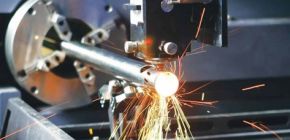



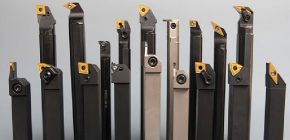
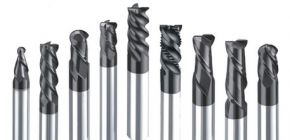


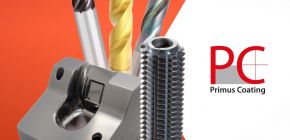



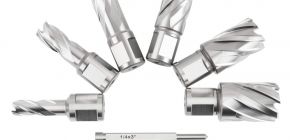
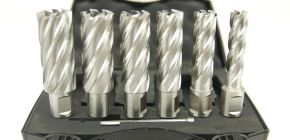
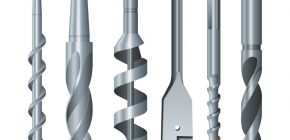
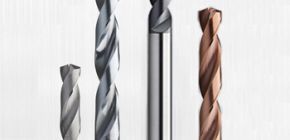

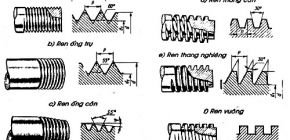

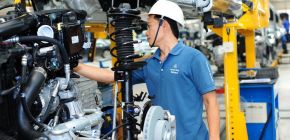

 0
0